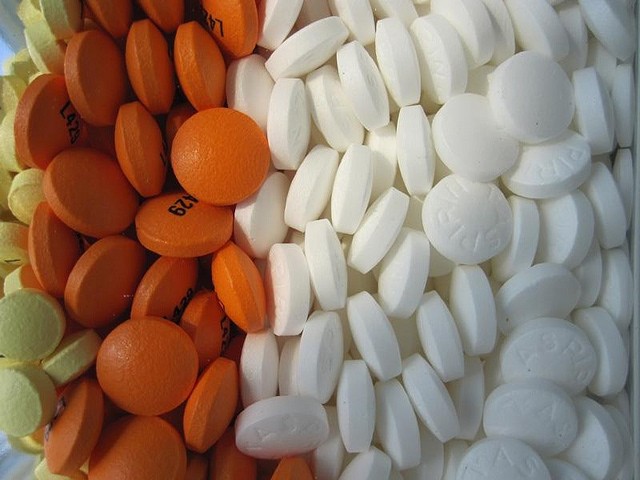According to the FDA, use of NSAIDs, (nonsteroidal anti-inflammatory drugs,) such as Advil (Ibuprofen) and Aleve (Naproxen), increase your risk of stroke and heart attack. As a result, the FDA now requires drug labels for all prescription NSAIDs to warn people of this risk. Over-the-counter non-aspirin NSAIDs also must contain this information.
People have been using NSAIDs since 1999 to treat pain and fever stemming from, among other things, colds, flu, arthritis and headaches. They offer less risk of gastrointestinal bleeding and other problems associated with other pain medications. But, over time, the FDA has seen greater risk from these drugs.
How much Advil and other NSAIDs is too much, you ask? Read the label on the bottle, and talk to your doctor. Here’s more information from MedlinePlus, a resource of the U.S. Information Library of Medicine.
The new FDA warning says:
- The risk of heart attack or stroke can occur as early as the first weeks of using an NSAID. The risk may increase with longer use of the NSAID.
- The risk appears greater at higher doses.
- It was previously thought that all NSAIDs may have a similar risk. Newer information makes it less clear that the risk for heart attack or stroke is similar for all NSAIDs; however, this newer information is not sufficient for us to determine that the risk of any particular NSAID is definitely higher or lower than that of any other particular NSAID.
- NSAIDs can increase the risk of heart attack or stroke in patients with or without heart disease or risk factors for heart disease. A large number of studies support this finding, with varying estimates of how much the risk is increased, depending on the drugs and the doses studied.
- In general, patients with heart disease or risk factors for it have a greater likelihood of heart attack or stroke following NSAID use than patients without these risk factors because they have a higher risk at baseline.
- Patients treated with NSAIDs following a first heart attack were more likely to die in the first year after the heart attack compared to patients who were not treated with NSAIDs after their first heart attack.
- There is an increased risk of heart failure with NSAID use.
Here’s more from Just Care:
- Opioid deaths on the rise
- Six things to know about your over-the-counter medications
- How to prepare for your doctor’s visit
- Six tips for lowering your prescription drug costs











Thanks Diane. Question: How much is too much? That issue was not addressed in this article. I take one advil on occasion as I feel a migraine coming on. any problem with that?
Thanks for your question. You should ask your doctor next time you visit and, in the meantime, never exceed the amount on the label. I’ve updated the post with some additional information from MedlinePlus.
…sadly, the best method of pain relief, CBD cannabis (along with any of ite derivatives like rubs, cremes and oils), is now considered a Schedule 1 substance by the DEA, and most likely under the new administration and incoming AG, may see serious threats to it’s legality in states where it is available (either by prescription or not). Kratom, another plant used in other parts of the world for chronic pain relief has come under fire by the DEA recently as well. Why? Because of inherent dangers they pose?
No, more to: 1. keep the war on drugs funded (most arrests and incarcerations tend to be for cannabis possession, transport, and sale) and 2. because cannabinoids (along with kratom) pose a serious competition to Pharma’s NSAID and opioid products. In states where CBD cannabis is available, opioid and NSAID use/sales have fallen. In states where THC cannabis is legal, alcohol (another powerful lobby) use/sales have also fallen.
Each year, prescription opioid overdoses take thousands of lives. Unfortunately I have not been able to find actual the death rate related to complications directly from the NSAIDs mentioned in this article (as well as for acetaminophen which causes liver and kidney damage). Meanwhile among CBD cannabis users, the death rate (related directly to it’s use) has been zero.
The only “negative” side effect of CBD cannabis is the effect on the bottom lines the of the Pharma industry, and those involved with supporting and maintaining the war on drugs (the latter which was originally conceived almost a half century ago as a means to undermine the anti war movement and civil rights).